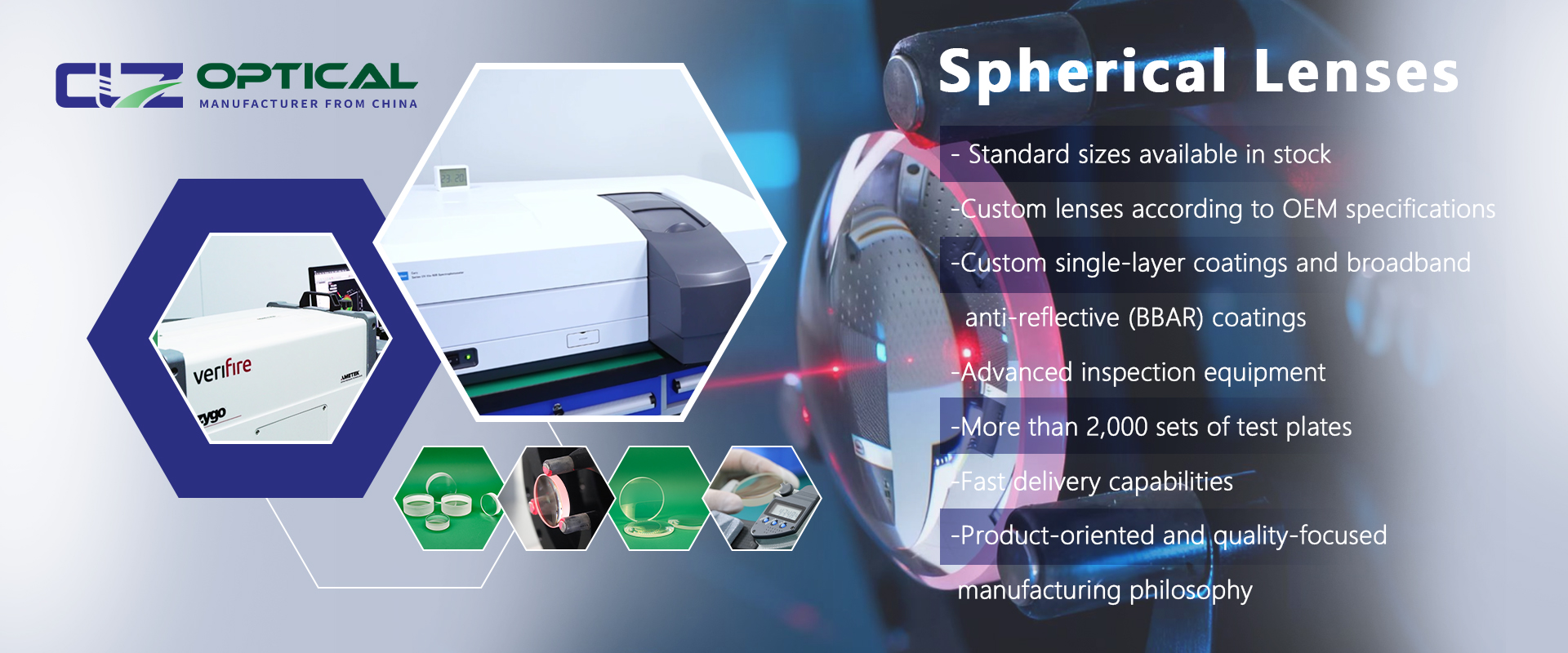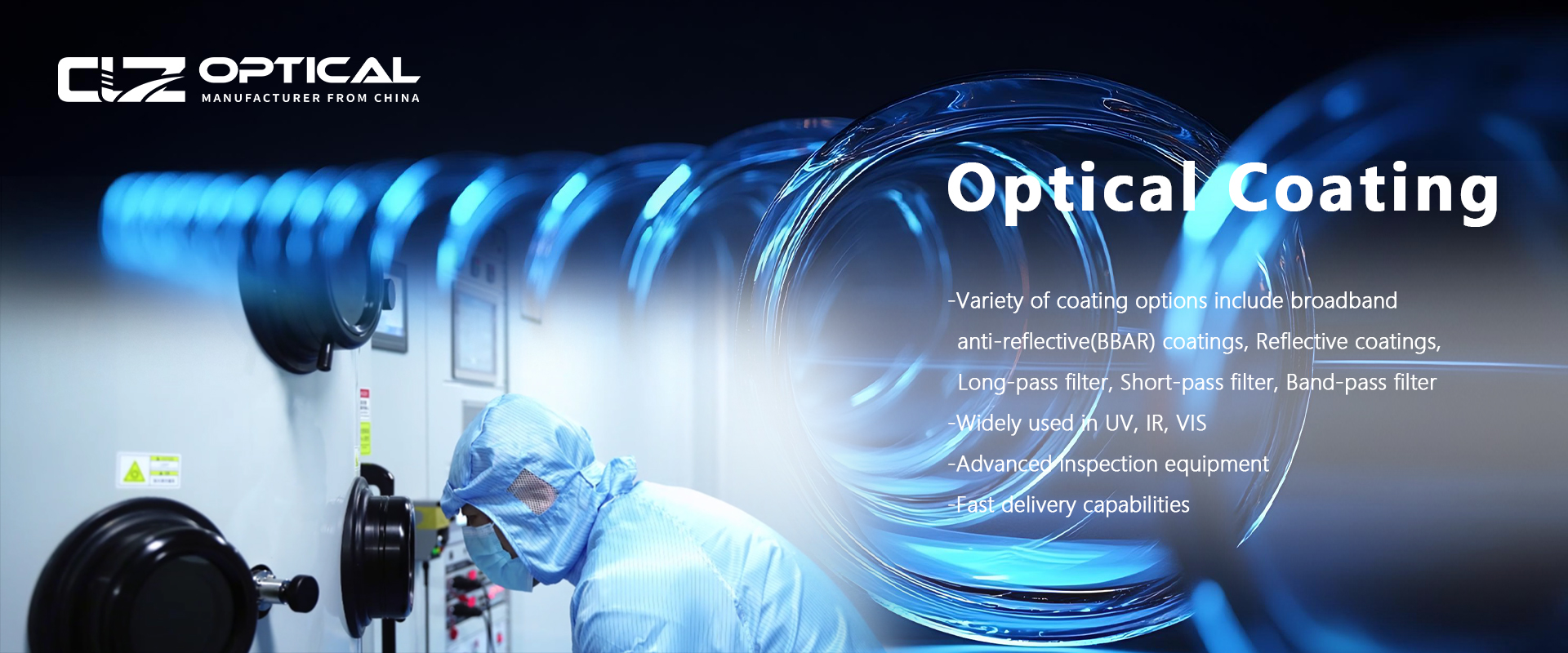Comprehensive Overview of Cylindrical Lenses
Nov. 12, 2025
A cylindrical lens, also known as a cylinder lens, is a specialized optical component with a curved, cylindrical shape on one axis and a flat or differently curved surface on the other. Unlike spherical lenses, which are symmetrical and focus light to a single point, cylindrical lenses direct light along a single dimension, forming a line of focus rather than a point. This unique optical behavior enables applications that require one-dimensional light manipulation, making cylindrical lenses critical in precision imaging, laser shaping, and optical correction systems.

Cylindrical Lenses vs. Spherical Lenses
The primary difference between a cylindrical and a spherical lens lies in how light is focused. Spherical lenses converge light beams to a single focal point, producing a conventional image. Cylindrical lenses, however, focus light along one axis, generating a line rather than a point. This one-dimensional focusing allows for effective correction of astigmatism, shaping of laser beams, and manipulation of image dimensions. By adjusting the lens orientation, a cylindrical lens can produce either a horizontal or vertical line of light, providing versatile optical functionality.
Types of Cylindrical Lenses
Cylindrical lenses are manufactured in a range of designs to suit various optical needs. Common types include:
Plano-Convex Cylindrical Lenses
These lenses, also called positive cylindrical lenses, focus collimated light into a line. They are widely used in laser line projection, line scanning, and image magnification along a single axis. By orienting the curved surface toward the incoming light, the lens efficiently focuses the light into a precise line, whereas collimating applications require the light to enter from the flat surface.
Plano-Concave Cylindrical Lenses
Negative cylindrical lenses expand or diverge light along a single axis. They are ideal for applications such as beam expansion, one-dimensional image compression, and laser line generation. Proper orientation of the curved surface toward the light source is essential to prevent aberrations and ensure optimal performance.
Biconvex and Biconcave Cylindrical Lenses
These lenses feature curvature on both surfaces, providing additional control over light propagation. Biconvex lenses can focus light more intensely along a single axis, while biconcave lenses are often used to diverge or expand light in one dimension.
Aspheric Cylindrical Lenses
Aspheric cylindrical lenses combine the advantages of aspheric surfaces with cylindrical design, reducing aberrations and improving image quality. These lenses are especially useful in high-precision laser systems, collimation of laser diodes, and beam shaping where standard cylindrical lenses may introduce distortion.
Applications of Cylindrical Lenses
Cylindrical lenses are indispensable in optical systems that require line-focused illumination or image correction. Key applications include:
Correcting astigmatism in imaging systems
Shaping laser beams for line projection or beam homogenization
Adjusting image dimensions along a single axis
Compressing images or light fields into one dimension
Producing circularized laser beams from elliptic outputs
Use in bar code scanners, spectroscopic systems, holographic lighting, and optical information processing
Due to the highly specialized nature of cylindrical lenses, many applications require custom designs tailored to exact specifications, including curvature, focal length, and substrate material.
Optical Materials and Manufacturing
Cylindrical lenses can be manufactured from a variety of optical materials to suit different wavelength ranges and performance requirements. Common substrates include high-quality optical glasses, fused silica, calcium fluoride, and specialty infrared or ultraviolet crystals. Advanced coatings, including antireflective layers, can enhance transmission efficiency and reduce unwanted reflections.
The production process for cylindrical lenses demands high precision, often requiring shaping, polishing, and surface inspection using interferometric testing. The curved surface must be perfectly aligned to ensure one-dimensional focusing, while the flat or secondary surface maintains image integrity along the perpendicular axis. High-speed polishing and modern metrology allow manufacturers to produce custom lenses rapidly without compromising surface quality or optical performance.
Advantages of Cylindrical Lenses
Cylindrical lenses offer unique benefits over traditional spherical optics:
Ability to focus light onto a line rather than a point
One-dimensional magnification and image adjustment
Precise control over beam shaping for lasers
Correction of astigmatism in imaging systems
Capability to produce specialized optical effects not possible with standard lenses
These properties make cylindrical lenses a versatile tool in both scientific and industrial applications, from high-resolution imaging to advanced laser systems.
Custom Cylindrical Lenses
Many optical projects require lenses with specific dimensions, curvature, and material properties. Custom cylindrical lenses can be designed to meet unique requirements, including achromatic designs, aspheric surfaces, parabolic mirrors, and double-curved configurations. Additional options may include off-axis cylindrical mirrors, angled mirrors, or fan-shaped lenses, enabling highly specialized optical solutions.
By combining advanced manufacturing techniques with precision metrology, custom cylindrical lenses can be produced to exact specifications, including focal length, radius of curvature, and surface quality. The lenses can also be tailored for specific spectral ranges, such as ultraviolet, visible, or infrared light.
Testing and Quality Assurance
High-precision testing is essential to verify the performance of cylindrical lenses. Interferometric measurements, such as those obtained with custom CGH nulls, ensure that lenses meet strict tolerances for surface figure, centering, and optical power. Quality assurance processes confirm that the final lenses deliver the required line focus, minimal aberration, and high transmission efficiency for demanding applications.
Conclusion
Cylindrical lenses are essential components in modern optics, offering capabilities that cannot be achieved with standard spherical lenses. Their ability to focus light into a line, correct astigmatism, shape laser beams, and adjust image dimensions makes them invaluable in research, industrial, and imaging systems. With precision manufacturing, customizable materials, and advanced coatings, cylindrical lenses provide unmatched flexibility for high-performance optical solutions.





















